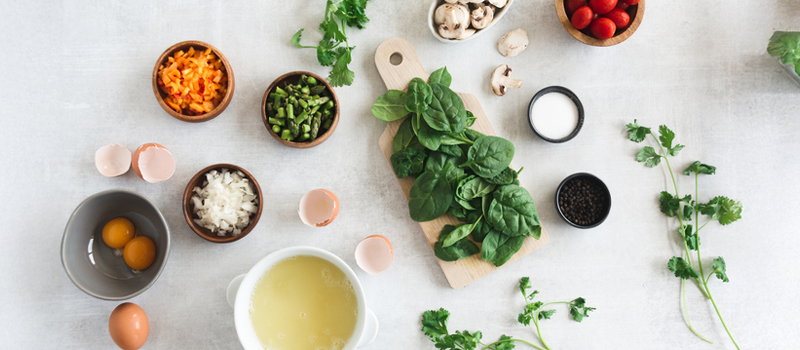Cooking Tips for Healthy Meals
Cooking Tips for Healthy Meals

Cooking Tips for Healthy Meals
Eating healthy can be both easy and delicious. These tips won't just give you a few recipes, but rather tips you can incorporate into almost any type of cooking. Here's to eating better without sacrificing time or flavor.
Cook With Less Oil
Using even just a little oil with each meal adds calories and fat to each meal. Cutting out some oil will make your meals healthier and is easy to do. You might even like the way they taste better.
The simplest way to reduce oil is by using different cooking methods. Rather than pan-frying on the stove, grill, broil, bake, or steam your main entree and side dish whenever possible. You won't be broiling a stir-fry, but broiling a steak will bring out flavor a lot. Many vegetables can also be broiled, or steamed if you prefer.
Make Meals Colorful
Colorful meals are rich and varied with nutrients. Advice from the University of Connecticut is to include as much color as possible in your meals. This idea needn't be limited to just salads and side dishes. Add scallions to mashed potatoes, cranberries to fresh-baked bread, or extra basil to pasta.
By creating colorful meals, you'll inherently be bringing many different nutrients together and be making dishes that look great to the eye.
Incorporate Plant Proteins
Eating plant proteins doesn't require going full-on vegetarian and pressing tofu. Some plant protein can be added to almost any diet. Here are just a few ideas:
- Have a handful of nuts for an afternoon snack.
- Add peanuts to an Asian-inspired chicken dish.
- Add cashews, almonds, or walnuts to salads.
- Add beans or lentils to soups.
- Use beans as the main protein for one dinner per week.
- Top oatmeal with chia or other seeds.
Of course, you can also start pressing and cooking tofu if you want. These other ideas require nowhere near as much effort, though.
Season More (Just Not With Salt)
Most people won't eliminate salt from their diet, but you might reduce how much salt you use. At the same time, you could increase flavor.
All you need is more of the other seasonings. Use herbs and spices liberally, and experiment with different combinations you might not yet be aware of. The combinations could provide even more flavor than salt in some dishes.
As more of an alternative to salt, try using lemon juice, lime juice, or vinegar. These won't work with every dish, but the acidity can bring out the flavors of certain foods, similar to how salt does.
